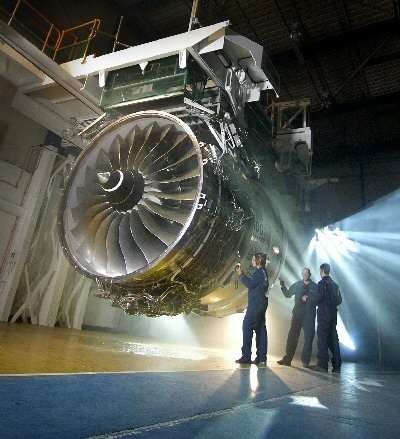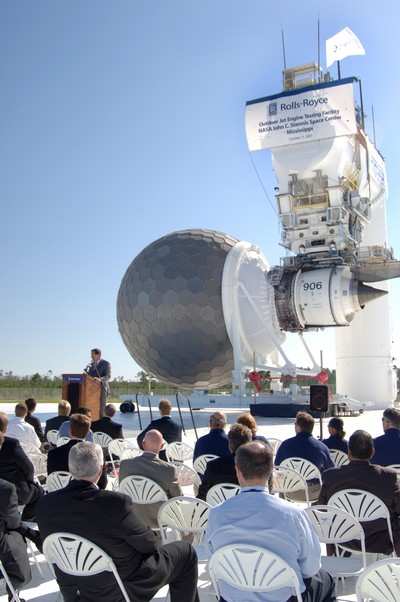Mon, Oct 15, 2007
 Rolls-Royce has formally opened a
new outdoor jet engine testing facility at the National Aeronautics
and Space Administration’s John C. Stennis Space Center in
Mississippi.
Rolls-Royce has formally opened a
new outdoor jet engine testing facility at the National Aeronautics
and Space Administration’s John C. Stennis Space Center in
Mississippi.
This new facility will be used to test development and prototype
jet engines for performance, noise, validation of safety systems
and other factors. Initially, it will test the company’s
latest, high-thrust Trent engines, the Trent 1000 and Trent 900,
being developed for the Boeing 787 Dreamliner and Airbus A380
respectively. This is the first Rolls-Royce test facility of its
kind outside the UK and the first built from the ground-up in the
US. There are only three such testing facilities in the world.
Including business yet to be announced, orders have been placed for
over 600 Trent 1000 engines by 18 operators and five leasing
companies - approximately half the Boeing 787 customers who have
made an engine decision. Producing a range of thrusts from 53,000 -
75,000lb, a single version of the Trent 1000 will power all
variants of the 787: the 787-8, 787-3 and 787-9.

In a ceremony at the new site, representatives from Rolls-Royce
and NASA cut a ribbon to officially open the facility. Nearly 150
people, including many state, local and county officials attended
the opening ceremony.
Rolls-Royce broke ground at Stennis just over a year ago and to
date has spent nearly $42 million on construction and upgrades
alone. Twenty employees work at this site with several more
scheduled to arrive in the coming months. Rolls-Royce previously
conducted its outdoor jet engine testing at Hucknall, UK. Recent
population growth however, had made continued testing in that area
environmentally unsustainable and in 2005, the company announced
its intent to relocate this testing capability from the UK to the
US.

James M. Guyette, President & CEO, Rolls-Royce North
America, said: “This is an important site doing important
work and we’re delighted to open this new facility here in
Mississippi, USA. Rolls-Royce has had a wonderful relationship with
the people of Mississippi for a number of years now and this new
site builds on that partnership.”
More News
During The Forced Landing, The Airplane’s Float Struts And Spreaderbars Collapsed Analysis: While en route to a remote fishing lodge in a float-equipped airplane, one of the >[...]
"X-59 is a symbol of American ingenuity. The American spirit knows no bounds. It's part of our DNA – the desire to go farther, faster, and even quieter than anyone has ever g>[...]
Aero Linx: The Honourable Company of Air Pilots The advancement of the public interest by the promotion of safety for all those who are employed in connection with or who travel by>[...]
Minimum Friction Level The friction level specified in AC 150/5320-12, Measurement, Construction, and Maintenance of Skid Resistant Airport Pavement Surfaces, that represents the m>[...]
Aero Linx: Aerospace Industries Association (AIA) For over 100 years, the American aerospace and defense industry has shaped the world around us. From the first flight to the moon >[...]
 NTSB Final Report: Dehavilland DHC-2 MK 1
NTSB Final Report: Dehavilland DHC-2 MK 1 Aero-News: Quote of the Day (10.29.25)
Aero-News: Quote of the Day (10.29.25) ANN's Daily Aero-Linx (10.29.25)
ANN's Daily Aero-Linx (10.29.25) ANN's Daily Aero-Term (10.30.25): Minimum Friction Level
ANN's Daily Aero-Term (10.30.25): Minimum Friction Level ANN's Daily Aero-Linx (10.30.25)
ANN's Daily Aero-Linx (10.30.25)





